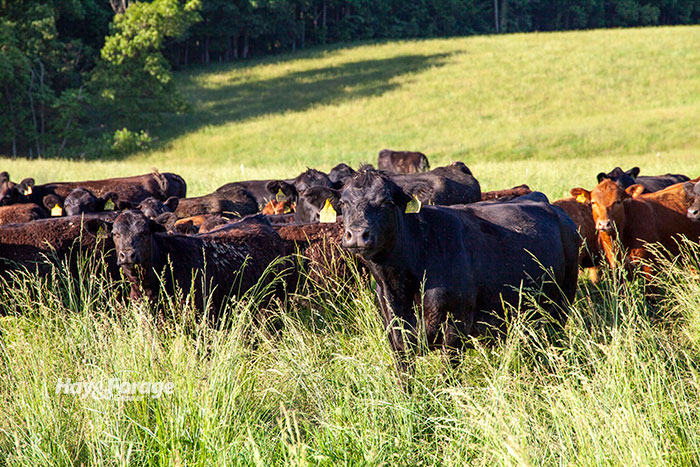Inhibit seedheads to realize pasture potential |
| By Amber Friedrichsen, Associate Editor |
|
|
 Spring cleaning is not exclusive to the inside of a home – it is a concept that is applicable to grazing systems as well. Controlling seedheads in cool-season grasses is like clearing away countertop clutter, and doing so will improve forage quality and benefit pasture renovation. Seedheads develop from reproductive tillers, which start to elongate when a plant is in boot stage. Matt Poore, with North Carolina State University, explains that when seedheads emerge, forage quality rapidly declines. This maturation process also releases hormones in plants that inhibit new vegetative growth. In addition to these negative effects, seedheads are also the site where toxins accumulate in tall fescue infected with a toxic endophyte. In the Alliance for Grassland Renewal’s newsletter, Poore recommends the following practices to remove seedheads before they become problematic. Clip pastures: Clipping pastures is the most common approach to managing seedheads, but it must be done in a timely manner. Pastures are often mowed to a height of about 12 inches tall to avoid removing vegetative growth; however, clipping a stand to this height can pose some challenges to subsequent grazing. “Unfortunately, this leaves a lot of low-quality forage and is the perfect height for those sharp stems to poke a cow in the eye, potentially leading to pinkeye,” the extension ruminant nutrition specialist notes. “If you control seedheads by clipping, do it before seeds mature and at a short enough height to remove much of the stems.” Harvest hay: Making hay is another time-sensitive approach to controlling seedheads. To maximize forage quality, cut hay when plants are between boot stage and the beginning of flower stage. With that said, hay must also be cut soon enough in the season to allow sufficient regrowth before a stand experiences the summer slump and pasture productivity takes a plunge. Cutting hay is particularly advantageous for tall fescue because the drying process can reduce endophyte toxicosis. This benefit will not be realized when making haylage or baleage, though, as forage would have limited sun exposure. Graze early: Waiting to turn cattle out to graze until forage is approximately 6 inches tall may give seedheads too much time to develop. Poore suggests starting the grazing season as soon as reproductive tillers begin elongating, and then quickly rotating animals through paddocks. “The key to this practice is to move animals fast enough to prevent close grazing of vegetative tillers,” Poore states. “This practice has a sweet spot of about two weeks when most of the grazing points are elevated but seedheads are still palatable enough to be readily consumed.” Use herbicides: Metsulfuron is an active ingredient in products like Chaparral and Cimarron, which target reproductive tillers and suppress seedheads in tall fescue. Poore advises producers to apply these herbicides during or before boot stage for the best results. This may also boost plant growth among other forages in a mixed stand that would have otherwise been shaded by maturing seedheads. Combine practices: It may be necessary to renovate a pasture if an existing stand is too thin or overcome by weeds. This is also required to convert a field of toxic tall fescue to one that contains a novel endophyte variety. In the latter case, it is especially critical to eliminate seedheads a year prior to pasture renovation, and combining two of the previously discussed practices will be useful in accomplishing that. “Completely preventing mature seed for renovation of toxic fescue pastures will likely require two clippings, or a combination of hay and clipping, metsulfuron and clipping, or early grazing and clipping,” Poore says. “In most cases, a single one of these practices will improve the quality of pasture as described earlier, but none will, by itself, control seed production adequately in preparation for renovation projects,” he concludes.  Amber Friedrichsen Amber Friedrichsen served as the 2021 Hay & Forage Grower editorial intern. She currently attends Iowa State University where she is majoring in agriculture and life sciences education-communications and agronomy. Friedrichsen grew up on her family’s diversified crop and livestock farm near Clinton, Iowa. |
